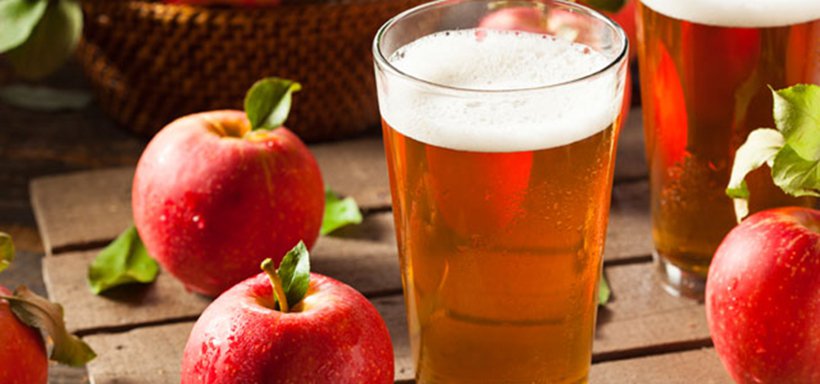October 23, 2018
Making Hard Cider

Apple harvest season is fast approaching. It's a favorite time of year for myself not only for the numerous varieties of apples available at the grocery store but also the abundance of fresh pressed cider. Using this juice to make hard cider is fun and rewarding to do at home. It's quite easy to make hard ciders just like the ones being produced at the many craft cideries that are popping up across the country.
In the recent past most of the commercial hard ciders available on the market were mass produced, extremely sweet, and lacking in complexity. There has since been a resurgence in small craft cideries producing complex and interesting ciders to meet the demand of cider drinkers across the country. You can now find ciders that are dry, off-dry and semi-sweet as well as still, sparkling like champagne, and also lightly carbonated. Breaking away from the traditional mass produced sweet ciders brings out flavor complexities similar to those found in wine. They then can be paired with varying food choices and enjoyed at meal time instead of just at the party.
If you are already making beer and wine at home making the jump to cider is very simple. The equipment needed is exactly the same and with a few additional ingredients you will be set to make your first batch.
Your first step in the process is to decide how to source your cider to ferment. There are two basic types of cider that will work for hard cider production. The first is pasteurized juice that is untreated before packaging. These you can buy in your grocery store and will only list apples as an ingredient. Any cider that list other ingredients besides apple will not ferment properly as they have been treated to prevent yeast activity. The second way is to go directly to the orchard and buy fresh pressed untreated cider from the source. This can be a little more difficult to come by as arrangements with the orchard may need to be made ahead of time as freezing or special storage will be needed. This extra step can yield you a better end product as heat pasteurization can affect the flavor of the cider. You can find places that use flash pasteurization which is less detrimental to the flavor.
Another important choice to make is your yeast selection. There are many different types of yeast that will work for you but you can see big differences in the end product depending on what you choose. Many people use or recommend using a champagne or wine yeast. They are alcohol and nutrient tolerant, work quickly and relatively cleanly, and are not sensitive to temperature. Some of my favorites are Lalvin 71B-1122 and Red Star Cote de Blanc.
Cider specific yeast also work well and are available in liquid form from Wyeast and White Labs. My go to yeast is White Labs WLP775 English Cider Yeast. This yeast works a little slower than wine yeast but leaves some nice apple character behind. I would also recommend trying out an English, American, or Scottish ale yeast as they can add complexity and tend not to strip away as much apple character. I have had good luck with White labs Edinburgh WLP028, Safale US 05, and White Labs WLP002 English Ale.
Follow these steps to ferment your hard cider.
Most cider that's made at home is carbonated in the bottle and has a dry finish. If you would like to make a sweeter finishing cider you can stabilize the cider with potassium sorbate and campden tablets (potassium metabisulfite) before you add additional sugar to the taste. If you do stabilize the cider you will have to bottle it without carbonation or force carbonate in a keg system. Another option for sweet carbonated cider is to use an artificial sweetener that is not fermentable to sweeten. However you like to drink your cider you can easily make your favorite at home.

Check out our Hard Cider 101: How to Make Hard Cider at Home class for in-depth info on making hard cider.
